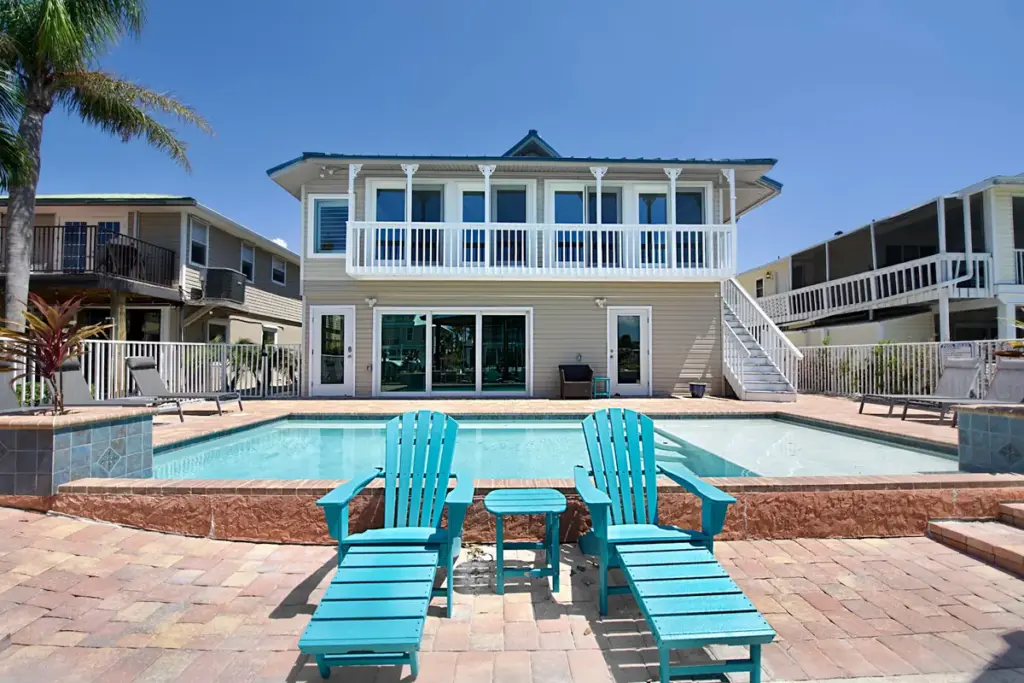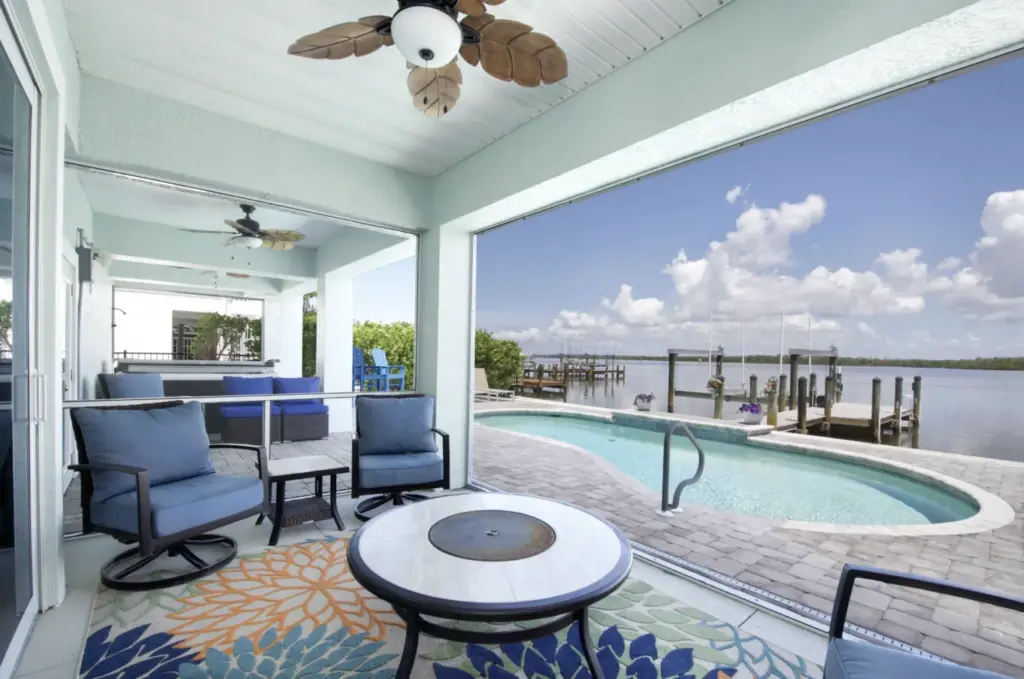When you first start in the short-term rental business, setting nightly rates for your beach rental property might sound simple: just pick an attractive price that works for you and your guests, and you’re done, right?
Not quite. Finding the ideal nightly rate for your Fort Myers Beach property is more complex than it may initially seem — in fact, it’s a lot more complex!
Several factors influence what you can and should charge for a night at your rental. To thrive in this competitive business, it helps to understand these factors and know how to leverage each one effectively when setting your pricing.
In short-term rentals, demand varies not only based on geographical location but also varies according to the time of the year and even the day of the week.
That’s why, even after establishing a suitable baseline price to charge guests, you can’t just leave it at that. To succeed in the vacation rental business, you need to think of pricing strategically as a dynamic and continuous process.
We call this strategy “dynamic pricing.” In this blog, we’ll explain dynamic pricing for vacation rentals and answer the questions we often hear from our new hosts.

Adopting a dynamic pricing strategy will help you maximize your revenue for each day of the calendar in Fort Myers Beach rentals. Pictured: Kokomo, Fort Myers Beach, FL.
What is dynamic pricing?
In a nutshell, dynamic pricing is a strategy that involves strategically setting the right price at the right time for the right guests. It’s a process that requires constant monitoring of the market and rate optimization to ensure you’re hitting the sweet spot that maximizes occupancy and revenue.
Trust us: this pricing strategy will make all the difference for your rental in Fort Myers Beach. Understanding the myriad of factors influencing demand and pricing will help you squeeze every single penny out of your rental investment.
No wonder airlines and hotel chains master dynamic pricing…
Are there any online tools that can help with dynamic pricing?
Luckily, in our digital age, you don’t need to do all the work by yourself. There are many online tools out there known as dynamic tools that will help you with dynamic pricing and the task of revenue management for your Fort Myers Beach Rental. They are called dynamic pricing software or revenue management, and sometimes just property management software.
Here are some of the tasks they help with:
- Adjusting rates based on demand and occupancy: these tools automatically adjust the rates for your property in response to real-time demand and occupancy levels.
- Optimizing pricing for high and low seasons: they identify your high and low seasons in your area based on historical data and help you find the ideal rates for both.
- Managing orphan days: these tools can handle short gaps in your rental calendar, trying to find the best booking they can to fill in the spot, boosting your occupancy and revenue, even if at a lower rate than normal.
- Identifying major events: based on real-time data, they keep you informed about significant events happening in your area that could impact demand.
- Making the most of last-minute changes: dynamic pricing tools assist in handling last-minute cancelations and rebookings, not just avoiding revenue loss but actually boosting your income in certain cases.
These tools can take a lot of the workload off your back, that’s true. And they can also help you understand the rules of dynamic pricing much better. Still, if you’re aiming to maximize earnings, you should put time into it and don’t take a set-and-forget approach.
At long-time property managers in Fort Myers Beach, we say that you should make it at least a part-time job, but we understand that our homeowners can’t commit that much time to it; that’s why we offer them our expertise.
At Sun Palace, we count on a team of revenue managers working around the clock to use dynamic pricing to optimize revenue for every one of our properties.
What is a “comp set”?
In the short-term rental industry, a “comp set” or “competitive set” is a competitor analysis. It refers to a group of rentals that are considered your direct competitors.
You should use your comp set for benchmarking purposes, which means comparing your own performance and pricing with that of the units in your comp set.
It’s simple: keeping an eye on your competition will help you make informed decisions for your property, not just regarding pricing but also positioning.
Here are five critical components we consider when building your comp set:
- Amenities: evaluate the amenities your property offers and compare them with similar properties in the area. If similar properties in your area have more or better amenities, that means guests will choose them instead of yours, and they can command higher prices than your property.
- Size and guest capacity: consider the size and guest capacity of your property and compare it to other similar listings of the same size and capacity in your area.
- Location: look for properties in proximity to yours to accurately assess the local market dynamics.
- Performance: examine factors such as revenue, average daily rate, and occupancy rate, utilizing the tools mentioned above to access performance data, even for your competitors.
- Quality: consider ratings and reviews of your property and others in your comp set to measure guest satisfaction.
Building a comp set empowers you to make data-driven decisions and stay competitive. Armed with this information, you are not just able to price your property more competitively, but you can also enhance your performance and elevate the guest experience.
What are the main pricing metrics in revenue management?
Now that you have built your comp set, you can leverage this data to set your pricing metrics competitively. Setting pricing metrics involves establishing the rules and criteria for determining your nightly rates.
We like to divide them into three main ones:
- Baseline Pricing: baseline pricing is like your starting point for setting a price. It’s the regular or standard price you choose for your product or service when you’re not making any special deals or discounts. Think of your baseline price as the “normal” price that you’d expect most customers to pay.
- Minimum pricing or off-peak pricing: this is the lowest price you’re willing to list your rental for. It’s like the floor price, and you shouldn’t go any lower than this, even if you’re offering discounts. Use off-peak pricing during slow periods and for last-minute bookings, but always respect the no-loss rule.
- Maximum pricing or peak season pricing: this, on the other hand, is the highest price you’re comfortable charging for a night in your rental. Usually, you should avoid going above this pricing, even if you think there’s a demand. As a rule of thumb, you don’t want to look greedy.
Besides seasonal demand, consider special events and holidays, as well as the difference in pricing between weekdays and weekends. Dynamic pricing tools can automate rates across all your channels to adapt to these variations.
Pro tip: when thinking of the metrics above, take a step back and evaluate your property objectively. Also, all the above should be subject to ongoing adjustments.
What rules can I apply to enhance my beach rental dynamic pricing strategy?
As part of your pricing strategy, you can also apply various custom rules to optimize your overall approach. Here are some of them:
- Last-minute discounts: offer discounts for vacancies within three weeks of the desired check-in date to incentivize last-minute bookings.
- Orphan discounts: reduce prices for short gaps in your rental calendar, known as “orphans,” which occur between two longer bookings.
- Longer stay discounts: encourage extended stays by providing discounts for bookings of a month or more. This not only fills vacancies but also reduces cleaning and operational costs.
After implementing these rules, analyze their impact on your rates and fine-tune the pricing using a data-driven approach.
It’s important to note that the more rules you apply, the more restrictive you may become for guests who have different preferences.
For example, if you have a minimum stay requirement of four days and 20% of your market is only looking for 3-day stays, your rental won’t appear for these potential guests.
As a rule of thumb, you can use rules to maximize your rental’s potential but try to be flexible when possible to avoid missing out on too many opportunities.

You should use customized rules to maximize your occupancy and make the most of your revenue strategy. However, be careful not to be too restrictive and lose potential guests as a result. Pictured: Estero Bay Sunrise, Fort Myers Beach, FL.
How to excel in the competitive landscape of Fort Myers Beach: the key to success is dynamic rate setting
Revenue management can be complex, but it’s the key to your success. The right pricing tools can boost revenue by 20-30%. However, having a knowledgeable professional who understands pricing strategies is invaluable.
In Fort Myers Beach, setting nightly rates similar to hotels and airlines is the most effective strategy to maximize your earnings. At Sun Palace, we closely monitor market trends and adjust rates daily.
Our approach to revenue management is essential for outperforming the Fort Myers Beach rental market. Our mantra is simple: Pay attention to trends, employ aggressive pricing, and remain adaptable.
